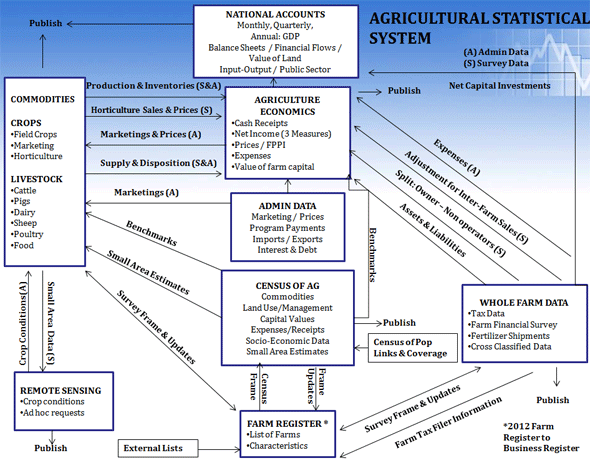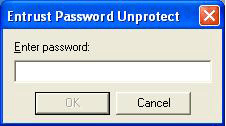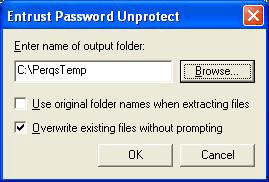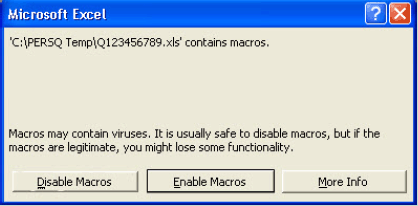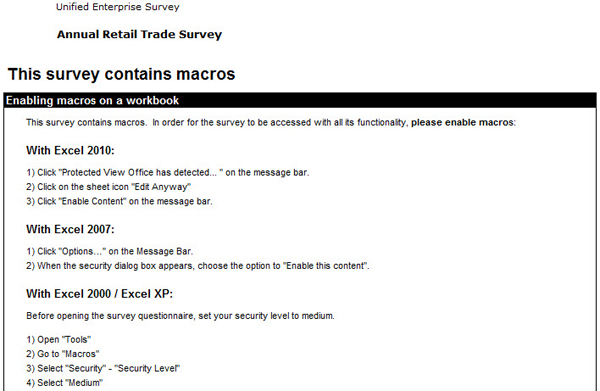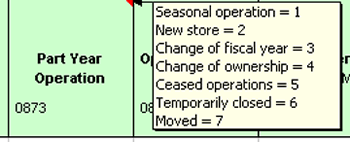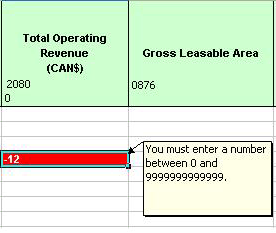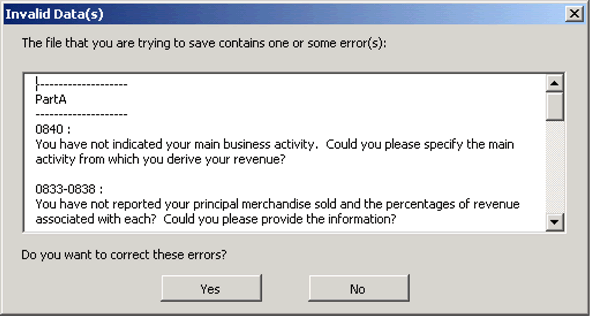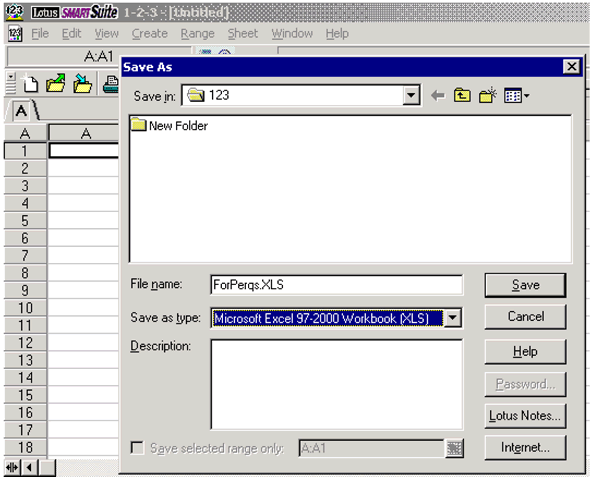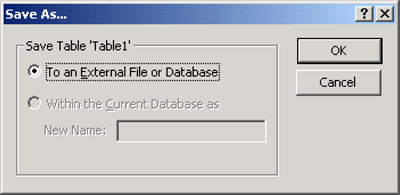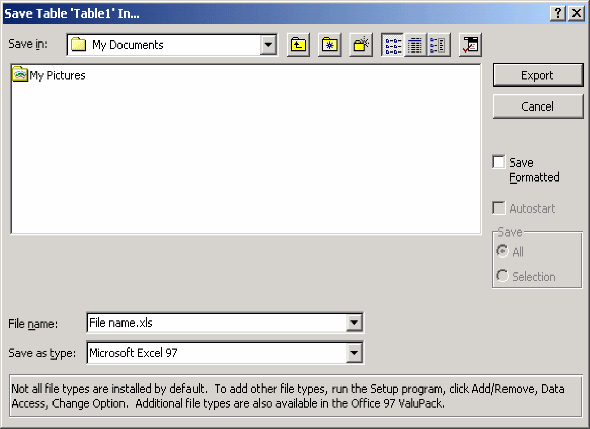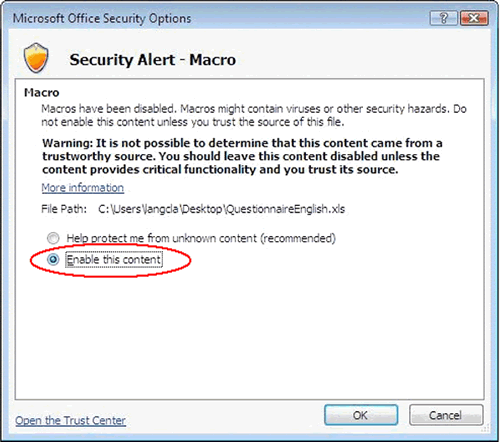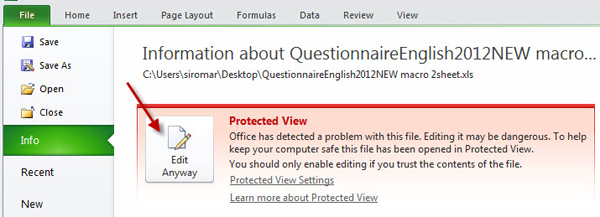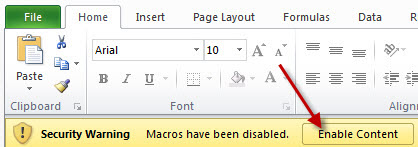| Commodity |
| Accommodation services |
| Adding machines |
| Aerobic shoes |
| Aerobic wear, men's |
| Aerobic wear, women's |
| Afghans |
| Aftershave |
| Agendas |
| Air conditioners, automotive |
| Air conditioners, central |
| Air conditioners, room |
| Air exchangers |
| Air fresheners, automotive |
| Air fresheners, household |
| Air hockey |
| Air mattresses, camping |
| Air mattresses, water |
| Air purifiers |
| Aircraft and part and accessories, new |
| Aircraft and part and accessories, used |
| Alarm systems, automotive |
| Alarm systems, household |
| Albums, coin and stamp collection |
| Albums, photo |
| Alcoholic beverages |
| All-terrain vehicles (ATV's) and parts and accessories, new |
| All-terrain vehicles (ATV's) and parts and accessories, used |
| Alterations and repair services, clothing and drapery |
| Ammonia cleaners |
| Ammunition, hunting and target shooting |
| Amplifiers, automotive |
| Amplifiers, non-automotive |
| Analgesics |
| Anchors, boat |
| Anchors, hardware |
| Animals, pets |
| Answering machines |
| Antacids |
| Antifreeze |
| Antihistamines |
| Antiperspirants |
| Antique cars |
| Antique light trucks and vans |
| Antiques (excl. automobiles) |
| Appliance repair and maintenance services |
| Appliances (camper, motor home, etc.) |
| Appliances (yacht, cruise, etc.) |
| Appliances, household (major) |
| Appliances, household (small electrical) |
| Appliances, used |
| Aprons |
| Aquariums |
| Archery equipment and supplies |
| Art restoration services |
| Artificial Christmas trees |
| Artificial limbs |
| Artists' supplies and equipment (paints, charcoal, brushes, etc.) |
| Asphalt sealing compounds |
| Astringents |
| Atlases |
| Attaché cases |
| Audio and video equipment and supplies |
| Audio disc, blank |
| Audio disc, pre-recorded |
| Audio disc, rental |
| Audio tape, blank |
| Audio tape, pre-recorded |
| Audio tape, rental |
| Autographed collectors' items |
| Automotive fuels |
| Automotive oils and additives |
| Automotive parts and accessories (excl. tires and tubes), new and used |
| Automotive repair and maintenance services |
| Automotive upholstery |
| Awnings |
| Axes |
| Baby (blankets, bottles, clothing and accessories, linens, plastic pants) |
| Baby (monitors, walkers, furniture and equipment) |
| Baby care products |
| Baby foods |
| Backpacks |
| Backpacks, women's fashion |
| Bacon, "deli" |
| Bacon, prepackaged |
| Badminton equipment |
| Badminton shoes |
| Bagels, fresh |
| Bagels, frozen |
| Bags, garment |
| Bags, gift |
| Bags, golf |
| Bags, paper and plastic |
| Bait (incl. live) |
| Bakery products, fresh, in-house and commercial |
| Bakery products, frozen |
| Bakery type products, prepackaged |
| Bakeware |
| Baking supplies (chocolate, flour, baking powder, chopped nuts, etc.) |
| Balls (baseball, football, soccer, volleyball and basketball) |
| Balls, golf |
| Balls, tennis and other racquet sports |
| Balls, toys |
| Band saws |
| Bandages |
| Banking machines (service) |
| Barbecue (BBQ) starter fuel |
| Barbecues (BBQs) and accessories |
| Barometers |
| Baseball caps |
| Baseball cleats, equipment and uniforms |
| Baseboard heaters |
| Baseboard trim |
| Basketball equipment and uniforms |
| Basketball shoes |
| Bath and shower gels, oils, salts |
| Bathing suits, boys' (sizes 7 to 18) |
| Bathing suits, girls' (sizes 7 to 16) |
| Bathing suits, infants' and children's (infants' sizes 0 to 24 mos., children's sizes 2 to 6X) |
| Bathing suits, men's |
| Bathing suits, women's |
| Bathrobes, men's |
| Bathrobes, women's |
| Bathroom accessories |
| Bathroom cabinets (excl. medicine) |
| Bathroom mats |
| Bathtubs |
| Batteries, automotive |
| Batteries, computer |
| Batteries, household |
| Batteries, rechargeable (power tools) |
| Batting, fiberglass insulation |
| Beams, structural |
| Beans, dried |
| Beauty parlour services |
| Bed frames |
| Bed headboards, footboards |
| Bed, junior/toddler |
| Bedding, household (excl. nursery) |
| Bedding, nursery |
| Bedpans |
| Bedspreads |
| Beef, fresh |
| Beef, frozen |
| Beer (excl. non-alcoholic) |
| Beer and wine making fees |
| Beer and wine making kits |
| Beer brewing supplies (incl. bottles, labels and caps) |
| Beer, non-alcoholic |
| Belts, automotive |
| Belts, boys' |
| Belts, furnace |
| Belts, girls' |
| Belts, men's |
| Belts, power tools |
| Belts, women's |
| Beverage crystals |
| Beverages, alcoholic |
| Beverages, non-alcoholic (excl. soft drinks) |
| Beverages, soft drinks |
| Bible |
| Bibs, baby |
| Bicycle repair services |
| Bicycles (excl. children's tricycles) |
| Bicycles, stationary |
| Bike clothing, specialized (padded shorts, singlets, etc.) |
| Biking equipment and accessories |
| Billiard tables and accessories |
| Binders (stationery) |
| Binoculars |
| Birdseed (incl. wild bird feed) |
| Biscuits, prepackaged |
| Blankets (incl. electric; excl. baby) |
| Blankets, baby |
| Blazers, men's |
| Blazers, women's |
| Bleaches, household |
| Bleaches, personal, hair |
| Blenders |
| Blinds, hunting |
| Blinds, window |
| Block heaters |
| Blouses, girls' |
| Blouses, women's |
| Blueprints |
| Blueprints, fees for drawing up |
| Boards, lumber (1x6, 2x4, etc.) |
| Boat lifts |
| Boat trailers |
| Boats and parts and accessories, new |
| Boats and parts and accessories, used |
| Body panels, automotive |
| Body powders |
| Body shop and collision services |
| Bologna, "deli" |
| Bologna, prepackaged |
| Bolts, hardware |
| Books, "talking" |
| Books, colouring and drawing |
| Books, hard and soft cover, new |
| Books, reference and text |
| Books, used |
| Boots, hiking |
| Boots, infants' and children's (winter, rain, cowboy) |
| Boots, men's and boys' (winter, rain, cowboy, work) |
| Boots, women's and girls' (winter, rain, cowboy, work) |
| Bottle deposit |
| Bottles, baby |
| Bowling equipment and shoes |
| Bows, craft supplies |
| Bows, giftwrap |
| Box folders |
| Box springs |
| Boxes, gift giving |
| Boxing equipment |
| Boys' clothing and accessories (sizes 7 to 18) |
| Braces (neck, leg, ankle, wrist, etc.) |
| Brake repair service |
| Brakes, automotive |
| Brassieres |
| Bread makers |
| Bread, fresh |
| Bread, frozen |
| Breast pumps |
| Bricks, building and paving |
| Bridles |
| Briefcases (leather and leather-like) |
| Broomball equipment and shoes |
| Brooms, curling and broomball |
| Brooms, household |
| Brushes and rollers, household paint |
| Brushes, artists' |
| Brushes, hair, personal |
| Brushes, pet grooming |
| Builders' hardware |
| Bulbs, plant |
| Buns, fresh |
| Buns, frozen |
| Bunting bags, infants' |
| Burial monuments |
| Bus tickets, service revenue |
| Buses, new |
| Buses, used |
| Bushes and shrubs |
| Butter |
| Buttons, sewing |
| Cabinet hardware and fittings |
| Cable (coaxial, electrical wiring, etc.) |
| Cafeterias, revenue from |
| Cakes, fresh |
| Cakes, frozen |
| Cakes, prepackaged |
| Calculator tapes |
| Calculators |
| Calendars |
| Camcorders and accessories |
| Cameras (still and digital) and accessories |
| Cameras and accessories, video |
| Camisoles (incl. sets) |
| Camouflage and hunting clothing |
| Camouflage nets |
| Campers, truck mounted |
| Camping equipment and supplies |
| Camping stoves |
| Can openers, electric |
| Can openers, non-electric |
| Candles |
| Candy (excl. baking supplies) |
| Candy apples |
| Candy floss |
| Canes, walking |
| Canned food (excl. pet) |
| Canoes, new |
| Canoes, used |
| Canvases, artists' supplies |
| Caps, baseball |
| Car bras |
| Car seats, infants' and children's |
| Car shelters |
| Car washing and waxing services |
| Carbon monoxide and smoke detectors |
| Carburettor and fuel injector cleaners |
| Card collections |
| Cards (greeting, birthday, Christmas, etc.) |
| Cards, playing |
| Carpenters' tools |
| Carpet and rug shampoos and deodorizers |
| Carpet cleaning services |
| Carpets and underlay |
| Cars, new |
| Cars, used |
| Carvings, artwork |
| Cassette players, automotive |
| Cassette players, non-automotive |
| Catamarans, new |
| Catamarans, used |
| Catering services |
| Caulking compounds |
| CD computer drives |
| CD players, automotive |
| CD players, non-automotive |
| CD, rental |
| CDs, blank |
| CDs, pre-recorded |
| Ceiling fans |
| Ceiling tiles |
| Cellular phones |
| Cellular phones, prepaid air time |
| Cement and other refractories |
| Central vacuums |
| Cereals, breakfast |
| Chains, hardware |
| Chainsaws |
| Changing tables, infants' |
| Charcoal, artists' supplies |
| Charity |
| Cheese (incl. "deli" cheese, cottage cheese etc) |
| Chemistry sets |
| Chess boards and accessories |
| Chicken, barbecued |
| Chicken, fresh |
| Chicken, frozen |
| China |
| Chippers, wood and garden |
| Chips (potato, corn, nacho, etc.) |
| Chisels |
| Chocolate (bars, wafers, etc.; excl. baking chocolate) |
| Chocolate, baking |
| Christmas giftwrap, tags and bows |
| Christmas lights and decorations |
| Christmas trees, artificial |
| Christmas trees, real, cut |
| Cigarettes |
| Cigars |
| Circuit breakers |
| Circular saws |
| Cleaning compounds, industrial |
| Cleaning supplies, household |
| Cleats (baseball, football and soccer) |
| Cloaks, men's |
| Cloaks, women's |
| Clock and watch repair and cleaning services |
| Clock radios |
| Clocks |
| Closet organizers |
| Clothing alterations |
| Clothing and accessories, boys' (sizes 7 to 18) |
| Clothing and accessories, girls' (sizes 7 to 16) |
| Clothing and accessories, infants' and children's (infants' sizes 0 to 24 mos., children's sizes 2 to 6X) |
| Clothing, motorcycle |
| Clothing, rental |
| Clothing, unisex |
| Clothing, used |
| Coal, household fuel |
| Coats, boys' (sizes 7 to 18) |
| Coats, girls' (sizes 7 to 16) |
| Coats, infants' and children's' (infants' sizes 0 to 24 mos., children's sizes 2 to 6X) |
| Coats, men's |
| Coats, women's |
| Coffee |
| Coffee filters (paper) |
| Coffee makers and grinders |
| Coffee shops, revenue from |
| Coffins |
| Coin collections |
| Coin purses |
| Cold remedies |
| Collectors' items (coins, stamps, cards, etc.) |
| Colognes |
| Colouring books |
| Comforters |
| Comic books |
| Commissions from Sears catalogue sales |
| Compactors, household waste |
| Composters |
| Computer software, business and entertainment |
| Computers and components and accessories, new |
| Computers, used |
| Concentrates, wine and beer making |
| Concrete sealing compounds |
| Conditioners, hair |
| Condoms |
| Conduit |
| Confectionery |
| Contact lens solutions and cleaners |
| Contact lenses |
| Containers, food storage |
| Containers, non-food storage |
| Contraceptives, non-prescription |
| Convection ovens |
| Converted vans (recreational) |
| Cookies, freshly baked |
| Cookies, prepackaged |
| Cookware |
| Coolers, food, camping and picnic |
| Coolers, liquor and wine |
| Cooling equipment and supplies |
| Corkscrews |
| Corrugated steel roofing |
| Cosmetic bags |
| Cosmetics and fragrances (excl. personal care products) |
| Costume jewellery |
| Costume rental |
| Costumes (Halloween, Christmas, etc) |
| Cotton balls and batting |
| Cough drops, lozenges and syrups |
| Countertops |
| Court shoes (tennis, badminton, etc.) |
| Covers, automobile |
| Covers, barbecue |
| Covers, boat |
| Covers, furniture |
| Covers, motorcycle |
| Cowboy boots, men's and boys' |
| Cowboy boots, women's and girls' |
| Crackers |
| Craft supplies |
| Cream (sour, table, whipping) |
| Cream, powdered |
| Crests and pins |
| Crib mobiles |
| Cribs, baby (incl. mattresses) |
| Crochet hooks |
| Crochet thread and yarn |
| Crop seed |
| Cross-trainers, footwear |
| Crutches |
| Crystal, tableware and stemware |
| Curling equipment and accessories |
| Curling irons |
| Curling kilts |
| Curling shoes |
| Curtains |
| Cushions, household |
| Cushions, patio furniture |
| Cutlery |
| Dairy products, fresh (incl. eggs; excl. ice cream) |
| Dairy products, powdered, canned, evaporated or condensed |
| Dance shoes |
| Dart boards and accessories |
| Day/week/month planners |
| Decorations, seasonal |
| Dehumidifiers |
| Deli foods and salads (excl. cheese) |
| Delivery charges, service revenue |
| Denture cleaners |
| Deodorants, personal |
| Deodorizers, room |
| Depilatories, electric |
| Depilatories, non-electric |
| Depth finders (boat) |
| Desk accessories |
| Diaper bags |
| Diapers, cloth |
| Diapers, disposable, baby and adult |
| Diesel fuel |
| Dietetic foods |
| Digital camcorders |
| Digital cameras |
| Dinghies |
| Disc players, CD, DVD (automotive) |
| Disc players, CD, DVD and laser (nonautomotive) |
| Discs, audio and video, pre-recorded |
| Discs, audio and video, rental |
| Discs, laser, pre-recorded |
| Dish detergent |
| Dishcloths/towels |
| Dishes, tableware |
| Dishwashers |
| Disinfectants, household |
| Diskettes, blank |
| Docks |
| Doilies |
| Dolls |
| Door chimes |
| Door hardware (knobs, hinges, locksets, etc.) |
| Doors and frames |
| Doughnuts, fresh |
| Doughnuts, frozen |
| Drapery making services |
| Drapes |
| Drawings, original |
| Dresses, 1 or 2 piece |
| Dressing gowns, men's |
| Dressing gowns, women's |
| Dressmaking services |
| Drills (hand, power) |
| Drink crystals |
| Driveway sealing compounds, oil base or acrylic |
| Drugs, non-prescription |
| Drugs, over-the-counter |
| Drugs, prescription |
| Dry cleaning services |
| Dryers, clothes rack |
| Dryers, clothes, appliance |
| Dryers, hair |
| Drywall |
| Duct tape |
| Ducts, air and heating |
| Duffel bags |
| Dune buggies, new |
| Dune buggies, used |
| Dustpans |
| Duvets and duvet covers |
| DVD computer drives |
| DVD players, automotive |
| DVD players, non-automotive |
| DVD, rental |
| DVDs, blank |
| DVDs, pre-recorded |
| Easels, artists' supplies |
| Eau de toilette |
| Eavestroughing |
| Eggs, fresh |
| Electrical equipment and supplies |
| Electrical panel |
| Electrical tape |
| Electricity, household power source |
| Emery boards |
| Engine cleaning and washing services |
| Engine oils, automotive |
| Engines, automotive, new and reconditioned |
| Engraving |
| Enlarging equipment, photographic |
| Entrées, frozen |
| Envelopes |
| Ethanol fuel blends |
| Exercise and fitness clothing, men's |
| Exercise and fitness clothing, women's |
| Exercise balls |
| Exercise equipment |
| Exhaust fans |
| Extension cords, household |
| Eyewear accessories (eyeglass cases, frames bought separately etc.) |
| Eyewear, non-prescription (incl. sunglasses) |
| Eyewear, prescription (incl. sunglasses) |
| Fabric dyes |
| Fabric protection services |
| Fabric softeners |
| Fabrics (incl. drapery and upholstery) |
| Facial tissues |
| Fans, household, electric |
| Farm equipment, new and used |
| Fasteners, hardware |
| Faucets |
| Fax machines |
| Faxing services |
| Feed, farm animals |
| Feminine hygiene products |
| Fencing (wood, wire, etc.) |
| Fencing equipment (sport) |
| Fermenting yeast, wine and beer making |
| Fertilizers, farm use |
| Fertilizers, indoor plants |
| Fertilizers, lawn and garden |
| Figure skates |
| Figurines |
| File folders |
| Files and rasps |
| Files, nail |
| Filing cabinets |
| Film for movie and video cameras |
| Film for still cameras |
| Film processing |
| Fire extinguishers |
| Firearm collections |
| Firearms, hunting |
| Fireplace accessories |
| Fireplace inserts |
| Firewood, household use |
| Fireworks |
| First-aid kits |
| Fish, "deli" |
| Fish, canned |
| Fish, fresh, smoked and cured (not "deli") |
| Fish, frozen |
| Fishing equipment and accessories |
| Fishing vests |
| Fitness equipment |
| Flagpoles |
| Flags and bunting |
| Flashlights |
| Flatware |
| Flea collars and powders |
| Floodlights and spotlights, exterior |
| Floor mats, automotive |
| Floor mats, household |
| Floor polish and wax |
| Floor polishers |
| Floor tiles |
| Flooring (hardwood, carpet, vinyl, etc.) |
| Flour |
| Flowers and plants, artificial |
| Flowers, delivery of |
| Flowers, florist, cut |
| Flowers, indoor potted |
| Flowers, lawn and garden |
| Flu preparations, medicinal |
| Foam, upholstery |
| Foil, tin |
| Fondue fuel |
| Food flasks |
| Food processors |
| Food wraps, plastic and foil |
| Foot care (sprays, powders, etc.) |
| Football cleats, equipment and uniforms |
| Footcare appliances |
| Footwear, "athletic" (excl. ski boots, skates and cleats) |
| Footwear, infants' and children's fashion |
| Footwear, men' and boys' fashion |
| Footwear, women's and girls' fashion |
| Foundation garments |
| Foundations, bedding |
| Fowl, fresh |
| Fragrances and cosmetics (excl. personal care products) |
| Frames, bed |
| Frames, door and window |
| Frames, picture and photograph |
| Freezers, household |
| Freight charges, service |
| Frozen foods |
| Fruit drinks and juices (excl. frozen concentrates) |
| Fruit, canned or dried |
| Fruit, fresh |
| Fruit, frozen |
| Frying pans, electric |
| Frying pans, non-electric |
| Fuel and water pumps, automotive |
| Fuel injectors, automotive |
| Fuels (fondue, home heating, household) |
| Fuels, automotive |
| Fur, men's |
| Fur, women's |
| Furnaces, home heating |
| Furniture and equipment, home office, new |
| Furniture covers and throws |
| Furniture hardware |
| Furniture polish and wax |
| Furniture repair |
| Furniture, indoor (excl. nursery), new |
| Furniture, nursery, new |
| Furniture, patio and garden |
| Furniture, used |
| Fuse boxes |
| Fuses, electric |
| Futons |
| Game, food, fresh |
| Game, food, frozen |
| Games, electronic (Nintendo, PlayStation, XBox etc.) |
| Games, non-electronic |
| Games, software (excl. Nintendo, PlayStation, Xbox etc.) |
| Games, used |
| Garage door |
| Garage door openers |
| Garbage bags |
| Garbage cans |
| Garbage disposals |
| Garden furniture |
| Garden sheds |
| Garden tools |
| Garden tractors |
| Garment bags |
| Gas line cleaner |
| Gaskets, automotive |
| Gasoline |
| Gazebos |
| Generators |
| Ghetto blasters and boom boxes |
| Gift bags |
| Gift baskets |
| Gift certificates |
| Giftware |
| Giftwrap |
| Gingerbread houses |
| Girdles |
| Girls' clothing and accessories (sizes 7 to 16) |
| Glass, automotive |
| Glass, sheet, non-automotive |
| Glasses, tableware |
| Gloves, baseball, softball, hockey, football and soccer |
| Gloves, golf |
| Gloves, latex (household) |
| Gloves, men's |
| Gloves, women's |
| Gloves, work, men's |
| Gloves, work, women's |
| Glue guns and glue (craft) |
| Glue guns and glue (tool) |
| Glues and adhesives, household |
| Glues and adhesives, industrial |
| Golf carts and equipments, rental |
| Golf carts, new (motorized) |
| Golf carts, used (motorized) |
| Golf clubs, gloves, shoes, equipment and accessories (excl. clothing) |
| Golf instructions (lessons) |
| Golf pull carts (motorized and non-motorized) |
| Golfing kilts |
| Gowns, bridal |
| Gowns, christening |
| Gowns, evening |
| Gowns, women's dressing |
| Granite (floor, wall and counter) |
| Grapes, wine making stock |
| Greases, lubricating, automotive |
| Greases, lubricating, general purpose |
| Greeting cards |
| Grinders, power |
| Gum, chewing |
| Guns, hunting and target shooting |
| Gypsum wallboard |
| Hair accessories (barrettes, etc.) for women |
| Hair cutting services |
| Hair dryers |
| Hair pieces and wigs |
| Hairbrushes |
| Haircare preparations |
| Ham, canned |
| Ham, cooked and prepackaged |
| Hammers |
| Hammocks |
| Hampers, clothes |
| Handbags |
| Handicraft kits |
| Handkerchiefs, men's |
| Handkerchiefs, women's |
| Hangers, clothing |
| Hard drives, computer |
| Hardware, building |
| Hardwood flooring |
| Harness goods (bridles, halters, reins, etc.) |
| Harnesses, pet |
| Harrows (farm equipment) |
| Hatchets |
| Hats and caps, boys' |
| Hats and caps, girls' |
| Hats and caps, infants' and children's |
| Hats and caps, men's |
| Hats and caps, women's |
| Head cleaners, audio and video tape players |
| Headphones |
| Headstones |
| Health and beauty aids (excl. cosmetics and fragrances) |
| Hearing aids |
| Heaters, "portable," space |
| Heaters, baseboard |
| Heaters, block, automotive |
| Heating ducts |
| Heating equipment and supplies |
| Heating pads |
| Helmets (baseball, softball, football and hockey) |
| Helmets, bicycle |
| Helmets, motorcycle |
| Herbal health supplements, remedies |
| Herbicides, lawn and garden |
| Herbs, spices |
| Highchairs |
| Hiking boots |
| Hinges |
| Hip waders |
| Hitch, trailer |
| Hobby supplies |
| Hockey equipment, skates, tape and uniforms |
| Hockey, table |
| Hoes |
| Home electronics repair services |
| Home gyms |
| Home office electronics and accessories (excl. computers) |
| Hops, brewing supply |
| Hoses, garden |
| Hosiery, boys' |
| Hosiery, girls' |
| Hosiery, infants' and children's (infants' sizes 0 to 24 mos., children's sizes 2 to 6X) |
| Hosiery, men's |
| Hosiery, women's |
| Hot tubs (outdoor) |
| Hot water bottles |
| House numbers |
| Houseboats, new |
| Houseboats, used |
| Household fuels |
| Hubcaps |
| Humidifiers, "portable" |
| Humidifiers, attached to furnace |
| Hunting and camouflage clothing |
| Hunting equipment and accessories |
| Ice cream |
| Ice cream, served for take-out |
| Ice milk |
| Ice, blocks |
| Ice, cubes |
| Incense |
| Income tax services |
| Infants' and children's clothing and accessories (infants' sizes 0 to 24 mos., children's sizes 2 to 6X) |
| In-line skates |
| Installation services |
| Insulation (fiberglass, styrofoam, etc.) |
| Insurance services |
| Integrated circuits, computer |
| Interior decorating services |
| Ironing boards |
| Irons (curling, steam) |
| Jackets, men's (not for outdoors) |
| Jackets, outerwear, boys |
| Jackets, outerwear, girls' |
| Jackets, outerwear, men's |
| Jackets, outerwear, women's |
| Jackets, women's (not for outdoors) |
| Jacks, automotive |
| Jacks, non-automotive |
| Jacuzzis (indoor) |
| Jacuzzis (outdoor) |
| Jams |
| Jars, glass |
| Jeans, boys' (sizes 7 to 18) |
| Jeans, girls (sizes 7 to 16) |
| Jeans, infants' and children's (infants' sizes 0 to 24 mos., children's sizes 2 to 6X) |
| Jeans, men's |
| Jeans, women's |
| Jeeps, new |
| Jeeps, used |
| Jewellery boxes |
| Jewellery repair and cleaning services |
| Jewellery, fine, costume and estate |
| Joint filling compounds |
| Juice concentrates, wine making |
| Juice, frozen concentrates |
| Juices (excl. frozen concentrates) |
| Junior bed |
| Kayaks |
| Kettles, electric |
| Kettles, non-electric |
| Key blanks |
| Key chains, rings and tags |
| Key cutting services |
| Keyboards, computer |
| Keyboards, musical |
| Kilts, men's |
| Kilts, unisex |
| Kilts, women's |
| Kitchen cabinets |
| Kitchen scales |
| Kitchenware |
| Knapsacks, fashion |
| Knitting needles |
| Labels, stationery |
| Laboratory equipment (incl. beakers, bunsen burners, test tubes, etc.) |
| Laces (shoe, boot and skate) |
| Ladders |
| Lamps, household |
| Landscaping services |
| Lanterns |
| Lard |
| Laser disc, pre-recorded |
| Laser disc, rental |
| Laundry baskets |
| Laundry detergent |
| Laundry tubs |
| Lawn and garden edging |
| Lawn dressings, top soil mixtures |
| Lawn furniture |
| Lawn mowers |
| Lawn ornaments |
| Lawn sprinklers |
| Lawn tractors |
| Laxatives |
| Leaf blowers |
| Leasing, non-automotive |
| Leasing, recreational vehicles |
| Leggings |
| Leotards |
| Lessons |
| Licenses (fishing, hunting, etc.) |
| Life jackets |
| Light bulbs, household |
| Light switches and plugs |
| Lighters, cigarette |
| Lighting fixtures, household (interior and exterior) |
| Lighting, outdoor specialty (patio/security/landscape) |
| Lightning rods |
| Lights, automotive |
| Limbs, artificial |
| Linens, household |
| Lingerie, women's |
| Linoleum flooring |
| Liqueur |
| Liquor |
| Livestock |
| Lock de-icer |
| Locks, bicycle |
| Locks, padlocks and door sets |
| Lotions, hand, face and body |
| Lottery tickets (service) |
| Luggage |
| Lumber, building |
| Lunch box (incl. fabric and cooler bags) |
| Lunch counters, revenue from |
| Luncheon meats, "deli" |
| Luncheon meats, prepackaged |
| Lunches and meals |
| Lures and scents, fishing and hunting |
| Magazines |
| Mailboxes |
| Make-up (costume, theatrical, etc.) |
| Make-up, cosmetics |
| Manicure services |
| Maps |
| Marble (floor, wall and counter) |
| Margarine |
| Marital aids |
| Markers, stationery |
| Masking tape |
| Masks and peels, facial |
| Matches |
| Maternity dresses |
| Maternity tops and bottoms |
| Mats, bathroom |
| Mats, car |
| Mats, household (excl. bath) |
| Mattress covers |
| Mattresses, crib |
| Mattresses, foam, spring, waterbed (excl. crib) |
| Meals and lunches |
| Measuring tapes, sewing |
| Measuring tapes, tool |
| Meat pies, frozen |
| Meat, "deli" (sliced, shaved, shredded, etc.) |
| Meat, canned |
| Meat, fresh, cooked, cured and smoked |
| Meat, frozen |
| Meats, prepackaged luncheon |
| Mechanics' tools |
| Medicine cabinets |
| Medium Density Fibreboard sheets (MDF) |
| Membership fees |
| Memo pads |
| Memory chips, computer |
| Mesh and netting, for plants |
| Micro assemblies, computer |
| Microphones (excl. computer) |
| Microphones, computer |
| Microscopes (professional and scientific instruments) |
| Microscopes (toy models) |
| Microwave ovens |
| Microwave stands |
| Microwave ware |
| Milk, fresh (incl. chocolate and soya) |
| Milk, powdered or evaporated |
| Minerals, health supplements |
| Minivans, new |
| Minivans, used |
| Mirrors, automotive |
| Mirrors, decorative |
| Mirrors, hand |
| Mitts, boys' |
| Mitts, girls' |
| Mitts, infants' and children's |
| Mitts, men's |
| Mitts, women's |
| Mixers, household, electric |
| Mixers, household, non-electric |
| Mixes (cake, biscuit, pancake, etc.) |
| Mobile homes, new and used |
| Model kits, toy and hobby |
| Modems |
| Moisturizers, skin |
| Money belts |
| Monitors, baby |
| Monitors, computer |
| Monuments and tombstones |
| Mopeds and parts and accessories, new |
| Mopeds, used |
| Mops |
| Motor boats, new |
| Motor boats, used |
| Motor homes and parts and accessories, new |
| Motor homes and parts and accessories, used |
| Motorbikes and parts and accessories, new |
| Motorbikes and parts and accessories, used |
| Motorcycle clothing |
| Motorcycles and scooters and parts and accessories, new |
| Motorcycles and scooters and parts and accessories, used |
| Moulding |
| Mousse, hair |
| Mouthwashes |
| Movie cameras and accessories |
| Movie/video rental |
| MP3 players |
| Muffins, fresh |
| Muffins, frozen |
| Muffler and exhaust services |
| Mufflers, automotive |
| Mulchers, grass and leaf |
| Multimedia items |
| Music boxes |
| Musical instrument repair |
| Musical instruments and accessories and supplies, new |
| Musical instruments, used |
| Nail files and clippers |
| Nail polishes and removers |
| Nails, artificial, finger |
| Nails, hardware |
| Napkins, cloth |
| Napkins, paper |
| Napkins, sanitary |
| Natural gas, appliance and heating fuel |
| Natural gas, automotive |
| Negligees |
| Newspapers |
| Nightshirts, boys' |
| Nightshirts, girls' |
| Nightshirts, infants' and children's (infants' sizes 0 to 24 mos., children's sizes 2 to 6X) |
| Nightshirts, men's |
| Nightshirts, women's |
| Non-alcoholic beverages (excl. soft drinks) |
| Non-prescription drugs |
| Non-prescription eyewear |
| Notebooks, stationery |
| Notepads, stationery |
| Notions (buttons, zippers, thread, needles, etc.) |
| Novelties |
| Numismatic (coin collecting) supplies |
| Nursery furniture and equipment |
| Nursery wall hangings |
| Nursing pads |
| Nutriopathic supplements |
| Nuts, confectionery |
| Nuts, hardware |
| Nylons |
| Oars, boats |
| Occupational clothing and uniforms, men's |
| Occupational clothing and uniforms, women's |
| Office furniture and equipment |
| Office supplies (pens, folders, binders, etc.) |
| Oil change and lube service |
| Oils, automotive |
| Oils, fats and lard, cooking |
| Oils, lubricating, (excl. cooking and automotive) |
| Ornaments, lawn |
| Ornaments, seasonal (e.g. Christmas) |
| Orthopedic shoes, infants' and children's |
| Orthopedic shoes, men's and boy's |
| Orthopedic shoes, women's and girl's |
| Orthotic devices |
| Outerwear, boys' (sizes 7 to 18) |
| Outerwear, girls' (sizes 7 to 16) |
| Outerwear, infants' and children's (infants' sizes 0 to 24 mos., children's sizes 2 to 6X) |
| Outerwear, men's (incl. ski clothing) |
| Outerwear, women's (incl. ski clothing) |
| Oven mitts |
| Ovens, household (convection and other) |
| Overcoats, boys' (sizes 7 to 18) |
| Overcoats, girls' (sizes 7 to 16) |
| Overcoats, infants' and children's (infants' sizes 0 to 24 mos., children's sizes 2 to 6X) |
| Overcoats, men's |
| Overcoats, women's |
| Over-the-counter drugs |
| Packing and mailing boxes |
| Paddle boats, new |
| Paddle boats, used |
| Paddles, ping pong |
| Pagers |
| Painkillers |
| Paint strippers and thinners |
| Paint, artists' supplies |
| Paint, automotive |
| Paint, household |
| Paintbrushes, artists' supplies |
| Paintbrushes, household |
| Paintings and related supplies |
| Panel, electrical |
| Pans, electric, cooking |
| Pans, non-electric, cooking |
| Pant suits |
| Pants, boys' (sizes 7 to 18) |
| Pants, girls' (sizes 7 to 16) |
| Pants, infants' and children's (infants' sizes 0 to 24 mos., children's sizes 2 to 6X) |
| Pants, men's, dress and casual |
| Pants, women's, dress and casual |
| Pantyhose |
| Paper (writing, computer printer, typing, machine tape, etc.) |
| Paper bags |
| Paper towels |
| Paper, giftwrap |
| Parkas, men's |
| Parkas, women's |
| Particle board |
| Parts, automotive (buses, medium/heavy trucks (classes 4, 5, 6, 7, and 8)), new and used |
| Parts, automotive (cars, pickup trucks, vans, minivans, jeeps, other sport utility vehicles), new and used |
| Parts, automotive (farm equipment) |
| Parts, automotive (recreational vehicles) |
| Parts, bicycle, new (excl. children's tricycles) |
| Parts, computer, new |
| Parts, furniture, all other indoor, new |
| Parts, furniture, nursery, new |
| Parts, major appliances, new |
| Parts, non-automotive (motor home, travel trailers, truck campers, converted vans) |
| Parts, non-automotive, farm equipment |
| Parts, small electrical appliances, new |
| Parts, still and digital cameras, new |
| Parts, telephone and home office electronics, new |
| Parts, television and audio/video, new |
| Party platters, "deli" |
| Party supplies (streamers, balloons, favours, etc.) |
| Pasta |
| Paste, wallpaper |
| Pastries, fresh |
| Patio furniture |
| Patio stones |
| Patterns, dressmakers |
| Paving stones |
| Peat moss |
| Pencils |
| Pens (incl. sets) |
| Perfumes |
| Periodicals |
| Personal care appliances, electric |
| Personal care products, non-electric |
| Personal Digital Assistant (PDA) |
| Personal watercraft, new |
| Personal watercraft, used |
| Pesticides (for indoor plants) |
| Pesticides, lawn and garden |
| Pet accessories (beds, toys, pet jackets, etc.) |
| Pet foods |
| Petroleum jelly |
| Pets (incl. domestic and exotic) |
| Philatelic (stamp collecting) supplies |
| Phone cards, revenue from sales of |
| Photo albums |
| Photo finishing services |
| Photocopiers |
| Photocopying services |
| Photograph developing/enlarging services |
| Photographic equipment (still and digital cameras) and supplies |
| Piano tuning and repairs |
| Pianos, new |
| Pianos, used |
| Pickles |
| Pickup coaches |
| Pickup trucks, new |
| Pickup trucks, used |
| Picnic baskets and accessories |
| Picnic tables |
| Picture frames |
| Picture framing services |
| Pies, fresh |
| Pies, frozen |
| Pillow cases and shams |
| Pillows |
| Ping pong equipment and accessories (incl. tables) |
| Pins and crests |
| Pins, sewing |
| Pipes, drainage |
| Pipes, plumbing |
| Pipes, smokers |
| Pipes, stove |
| Pistols (incl. air and target) |
| Pizza, frozen |
| Pizza, prepared |
| Pizza, served on premises |
| Place mats |
| Plant pots |
| Plants and flowers, artificial |
| Plants, indoor |
| Plants, lawn and garden |
| Plaster |
| Plastic bags |
| Plastic pants, baby |
| Plastic wrap, food |
| Plates and covers, electrical |
| Plates, tableware |
| Playground slides, swings |
| Playground structures |
| Playing cards |
| Playpens |
| Pliers |
| Plotters |
| Plows, garden tractor attachments |
| Plugs, electrical |
| Plumbing equipment and supplies |
| Plywood |
| Polish, furniture and floor |
| Polish, shoe |
| Polishers, floor |
| Ponds and accessories |
| Pool and snooker equipment and accessories (incl. tables) |
| Pool chemicals |
| Pools, above ground, in-ground and accessories |
| Pools, wading, portable |
| Popcorn, popped |
| Popcorn, unpopped |
| Popsicles |
| Pork, fresh |
| Pork, frozen |
| Portfolios (leather and leather-like) |
| Portrait taking services |
| Post office services |
| Postcards |
| Post-it notes |
| Posts and poles (building, fencing, etc.) |
| Pot holders |
| Pot-pourri |
| Pots, cooking |
| Pots, plant |
| Pottery, decorative |
| Potting soil |
| Poultry, fresh |
| Poultry, frozen |
| Powdered milk and creamers |
| Power bars (nutritional) |
| Power generators |
| Prefabricated stairs and other structural pieces |
| Pregnancy, test kits |
| Prepared foods for take-out |
| Pre-recorded media |
| Pre-recorded media rental |
| Prescription drugs |
| Prescription eyewear |
| Pressure cleaners, water |
| Pretzels |
| Printers |
| Prints and related supplies |
| Professional instruments |
| Propane fuel, automotive |
| Propane fuel, household |
| Propane tanks (BBQ) |
| Propane torch cylinders |
| Propane torch kits |
| Prophylactics |
| Pruners, plant and tree |
| Pumice stones |
| Pumps, heat |
| Pumps, water (automotive) |
| Pumps, water (household) |
| Punching bags |
| Purifiers, air |
| Purifiers, water |
| Purses |
| Puzzles |
| Pyjamas, boys' (sizes 7 to 18) |
| Pyjamas, girls' (sizes 7 to 16) |
| Pyjamas, infants' and children's (infants' sizes 0 to 24 mos., children's sizes 2 to 6X) |
| Pyjamas, men's |
| Pyjamas, women's |
| Racing sets, toy and hobby |
| Racquet sports equipment |
| Radar equipment, boats |
| Radiators, automotive |
| Radios, automotive |
| Radios, ham |
| Radios, household |
| Rainwear, boys' (sizes 7 to 18) |
| Rainwear, girls' (sizes 7 to 16) |
| Rainwear, infants' and children's (infants' sizes 0 to 24 mos., children's sizes 2 to 6X) |
| Rainwear, men's |
| Rainwear, women's |
| Rakes |
| Ranges and range hoods/fans |
| Rattles etc., baby |
| Razor blades |
| Razors, electric |
| Razors, non-electric |
| Receipt books |
| Receivers and tuners, audio, non-automotive |
| Records (excl. used) |
| Records, rental |
| Recreational vehicle repair and maintenance services |
| Reel-to-reel tape players |
| Refrigerators |
| Rental, audio and video tapes and discs |
| Rental, automotive |
| Rental, non-automotive (excl. video tapes) |
| Rental, recreational vehicles, snowmobiles, farm equipment |
| Rent-to-own (appliances, furniture, etc.) |
| Repair services, automotive (excl. recreational vehicles and farm equipment) |
| Repair services, non-automotive (incl. recreational vehicles and farm equipment) |
| Restaurants, revenue from |
| Ribbons and bows, giftwrap |
| Rice |
| Rifles (incl. air and target) |
| Ringette equipment and uniforms |
| Robes, men's |
| Robes, women's |
| Rock climbing equipment and accessories |
| Roller skates |
| Rolls, dinner, fresh |
| Roof trusses |
| Roofing felt |
| Roofing tiles |
| Rope |
| Rowboats, new |
| Rowboats, used |
| Rubbing alcohol |
| Rucksacks |
| Rug cleaning equipment |
| Rug shampoos and deodorizers |
| Rugby equipment |
| Rugs, floor |
| Rulers |
| Runners, carpeting |
| Running and jogging wear, men's |
| Running and jogging wear, women's |
| Running shoes |
| Rustproofing service |
| Saddlery (saddles, pads, girth straps, etc.) |
| Safes, security |
| Safety clothing, men's |
| Safety clothing, women's |
| Safety equipment (gloves, goggles, helmets, masks, ear protectors, etc.) |
| Safety footwear, men's |
| Safety footwear, women's |
| Sailboards |
| Sailboats, new |
| Sailboats, used |
| Salad bowls (incl. sets) |
| Salad dressings |
| Salads and other "deli" foods (excl. cheese) |
| Saline solutions, optical |
| Salt, road (incl. synthetic) |
| Salt, sidewalk (incl. synthetic) |
| Salt, table |
| Salt, water softener |
| Sandals, infants' and children's |
| Sandals, men's and boys' |
| Sandals, women's and girls' |
| Sanders, electric |
| Sandpaper |
| Sandwich bags |
| Sashes, door and window |
| Satellite dishes |
| Saunas |
| Sausages, fresh, prepackaged |
| Sausages, frozen |
| Saws, hand and power |
| Scales, bathroom |
| Scales, kitchen |
| Scanners, computer |
| Scarves, men's |
| Scarves, women's |
| School bags (leather and leather-like) |
| Scientific instruments |
| Scooters, children's |
| Scooters, parts and accessories, motorized |
| Scopes, rifle, pistol and archery |
| Scotch tape |
| Scouring powders |
| Scrapers, paint and wallpaper |
| Screwdrivers |
| Screws |
| Scuba gear |
| Sculptures |
| Seafood, "deli" |
| Seafood, canned |
| Seafood, fresh, smoked and cured (not "deli") |
| Seafood, frozen |
| Seat covers, automotive |
| Security systems, automotive |
| Security systems, household |
| Seed, crop |
| Seedlings, nursery stock |
| Seeds (incl. flower, plant and grass) |
| Sewing kits, notions and supplies |
| Sewing machines |
| Shakes, roofing |
| Shampoos, carpet |
| Shampoos, hair |
| Shampoos, pet |
| Shavers and shears, pet, electric |
| Shavers, personal, electric |
| Shaving creams, gels and foams |
| Sheers, drapery |
| Sheet music |
| Sheets, bed (excl. nursery) |
| Sheets, nursery |
| Shelving and brackets |
| Sherbets |
| Shingles (incl. roofing and siding) |
| Shirts, boys' (sizes 7 to 18) |
| Shirts, girls' (sizes 7 to 16) |
| Shirts, infants' and children's (infants' sizes 0 to 24 mos., children's sizes 2 to 6X) |
| Shirts, men's, dress and casual |
| Shirts, women's |
| Shock absorbers |
| Shoe accessories (clip-on) |
| Shoe polish and silicone sprays, etc. |
| Shoe repair |
| Shoes, "athletic" (excl. ski boots, skates and cleats) |
| Shoes, infants' and children's fashion |
| Shoes, men' and boys' fashion |
| Shoes, women's and girls' fashion |
| Shop vacs |
| Shorts, boys' (sizes 7 to 18) |
| Shorts, girls' (sizes 7 to 16) |
| Shorts, infants' and children's (infants' sizes 0 to 24 mos., children's sizes 2 to 6X) |
| Shorts, men's |
| Shorts, women's |
| Shovels, garden |
| Shovels, snow |
| Shower curtains (incl. liners) |
| Shower enclosures, heads |
| Shrubs and bushes |
| Shuffleboard |
| Shutters (indoor) |
| Shutters (outdoor) |
| Sick room equipment |
| Siding, wood, aluminum and vinyl |
| Silk flowers |
| Silverware |
| Sinks |
| Skate sharpening |
| Skateboards |
| Skates, figure |
| Skates, hockey |
| Skates, in-line, roller |
| Ski boots |
| Ski equipment, water |
| Ski jackets and suits, boys' (sizes 7 to 18) |
| Ski jackets and suits, girls' (sizes 7 to 16) |
| Ski jackets and suits, infants' and children's (infants' sizes 0 to 24 mos., children's sizes 2 to 6X) |
| Ski jackets and suits, men's |
| Ski jackets and suits, women's |
| Ski suits, aerodynamic racing |
| Skin lotions and toners |
| Skirts, girls' (sizes 7 to 16) |
| Skirts, infants' and children's (infants' sizes 0 to 24 mos., children's sizes 2 to 6X) |
| Skirts, women's |
| Skis (alpine and cross country) and accessories |
| Skis, water |
| Skylights |
| Sleds |
| Sleeping aids, non-prescription |
| Sleeping bags |
| Sleepwear, boys' (sizes 7 to 18) |
| Sleepwear, girls' (sizes 7 to 16) |
| Sleepwear, infants' and children's (infants' sizes 0 to 24 mos., children's sizes 2 to 6X) |
| Sleepwear, men's |
| Sleepwear, women's |
| Sleighs |
| Slide projectors and accessories |
| Slides, photographic |
| Slides, playground |
| Slippers, infants' and children's |
| Slippers, men's and boys' |
| Slippers, women's and girls' |
| Slips, women's |
| Smoke and carbon monoxide detectors |
| Snacks (chips, candy, nuts, etc.) |
| Snooker tables |
| Snorkels |
| Snow shovels and scoops |
| Snowblowers |
| Snowboards |
| Snowmobile suits, men's |
| Snowmobile suits, women's |
| Snowmobiles and parts and accessories, new |
| Snowmobiles and parts and accessories, used |
| Snowshoes |
| Snowskates |
| Snowsuits, boys' (sizes 7 to 18) |
| Snowsuits, girls' (sizes 7 to 16) |
| Snowsuits, infants' and children's (infants' sizes 0 to 24 mos., children's sizes 2 to 6X) |
| Snowsuits, men's |
| Snowsuits, women's |
| Snuff |
| Soap, laundry and dish |
| Soap, personal, hand, face and body |
| Soccer cleats, equipment and uniforms |
| Soccer tables (game) |
| Socks, boys' |
| Socks, girls' |
| Socks, infants' and children's |
| Socks, men's |
| Socks, women's |
| Sod |
| Sofa beds |
| Soffits |
| Soft drinks, canned and bottled |
| Software, business and entertainment |
| Soil, outdoor |
| Soil, potting |
| Solar panel heating kits |
| Soldering irons |
| Sound systems, automotive |
| Sound systems, non-automotive |
| Sour cream |
| Souvenirs |
| Space heaters, "portable" |
| Spades, garden |
| Spark plugs |
| Speakers, automotive |
| Speakers, non-automotive |
| Spices, herbs |
| Sport bags |
| Sport jackets, men's |
| Sport utility vehicles, new |
| Sport utility vehicles, used |
| Sporting goods, used |
| Spotlights and floodlights, exterior |
| Springs, automotive |
| Squash equipment and supplies (excl. footwear and clothing) |
| Stain removers |
| Stained glass making supplies |
| Stains, wood |
| Stamp collections |
| Stamps (service) |
| Stapler gun, tool |
| Staplers and staples |
| Stationary bicycles |
| Stationery (envelopes, cards, writing paper, etc.) |
| Statuettes |
| Stemware, crystal and other |
| Stereos, automotive |
| Stereos, non-automotive |
| Stockings, boys' |
| Stockings, girls' |
| Stockings, infants' and children's |
| Stockings, men's |
| Stockings, women's |
| Stools |
| Storage (furniture, fur coats, vehicles, etc.) |
| Stoves, camping |
| Stoves, household, cooking |
| String |
| Strollers |
| Stuffed animals, toys |
| Sugar |
| Suitcases |
| Suits, men's (incl. made-to-measure, readyto-wear) |
| Suits, women's (incl. pant suits) |
| Sunglasses, non-prescription |
| Sunglasses, prescription |
| Sunscreens |
| Surfboards |
| Surveyors equipment |
| Suspenders, men's |
| Sweat tops and bottoms, men's |
| Sweat tops and bottoms, women's |
| Sweaters, boys' (sizes 7 to 18) |
| Sweaters, girls' (sizes 7 to 16) |
| Sweaters, infants' and children's (infants' sizes 0 to 24 mos., children's sizes 2 to 6X) |
| Sweaters, men's |
| Sweaters, women's |
| Swimsuits, boys' (sizes 7 to 18) |
| Swimsuits, girls' (sizes 7 to 16) |
| Swimsuits, infants' and children's (infants' sizes 0 to 24 mos., children's sizes 2 to 6X) |
| Swimsuits, men's |
| Swimsuits, women's |
| Swings, playground |
| Switches, electrical |
| Syrups (corn, maple, chocolate, etc.) |
| Table cream |
| Table hockey |
| Table linens, disposable |
| Table linens, non disposable |
| Tableware (excl. disposable) |
| Tableware, disposable (paper and plastic plates, cups, forks, etc.) |
| Tack, equine (saddles, pads, girth straps, etc.) |
| Tackle boxes, fishing |
| Tailoring services |
| Tape recorders and players (non-automotive) |
| Tape, hockey |
| Tape, masking, duct |
| Tape, measuring, sewing |
| Tape, measuring, tool |
| Tapes, audio and video, blank |
| Tapes, audio and video, pre-recorded |
| Tapes, audio and video, rental |
| Tar paper |
| Tar, roofing |
| Tarpaulins |
| Tea |
| Tea towels |
| Teething rings (baby) |
| Telephone cards |
| Telephones (incl. cellular) |
| Telescopes (professional and scientific instruments) |
| Telescopes (toy models) |
| Televisions |
| Tennis equipment and accessories (excl. footwear and clothing) |
| Tennis shoes |
| Tent trailers and parts and accessories, new |
| Tent trailers and parts and accessories, used |
| Tents |
| Textbooks |
| Thermometer, cooking |
| Thermometer, health care |
| Thermometer, household |
| Thermostat, automotive |
| Thermostat, household |
| Thumb tacks |
| Ties, neck |
| Tights, girls (sizes 7 to 16) |
| Tights, infants' and children's (infants' sizes 0 to 24 mos., children's sizes 2 to 6X) |
| Tights, women's |
| Tiles (ceramic, clay, marble, granite, vinyl and cork) |
| Tillers |
| Tin foil |
| Tire alignment and balancing services |
| Tire and wheel mounting services |
| Tire pumps, bicycle |
| Tire rotation service |
| Tires and tubes for bicycles |
| Tires and tubes for buses, medium trucks (classes 4, 5, 6, 7, and 8), (new, used and retreads) |
| Tires and tubes for cars, pickup trucks, minivans, jeeps, vans, other sport utility vehicles (new, used and retreads) |
| Tires and tubes for farm equipment (new, used and retreads) |
| Tires and tubes for recreational vehicles (new, used and retreads) |
| Tires and tubes for utility trailers (new, used and retreads) |
| Toasters and toaster ovens |
| Tobacco products and accessories (incl. cigarette papers, rolling machines, etc.) |
| Toboggans |
| Toddler bed |
| Toilet fresheners |
| Toilet paper |
| Toilet tank covers (incl. sets) |
| Toiletries, personal |
| Toilets |
| Tombstones and monuments |
| Toners |
| Tool belts |
| Tool sheds |
| Toolboxes |
| Tools, garden |
| Tools, hand and power (excl. garden tools) |
| Trucks, used, light |
| Trucks, used, medium/heavy (classes 4, 5, 6, 7 and 8) |
| Trunks (storage, travel) |
| Trusses, personal health care |
| Trusses, roof |
| T-shirts, boys' (sizes 7 to 18) |
| T-shirts, girls' (sizes 7 to 16) |
| T-shirts, infants' and children's (infants' sizes 0 to 24 mos., children's sizes 2 to 6X) |
| T-shirts, men's |
| T-shirts, women's |
| Tubs (bath, laundry) |
| Tubs, hot (outdoor) |
| Tuners and receivers, audio, automotive |
| Tuners and receivers, audio, non-automotive |
| Tune-ups, automotive |
| Turkey, fresh |
| Turkey, frozen |
| TV dinners, frozen |
| Twine, farming |
| Twine, household |
| Typewriters |
| Umbrellas (beach, patio furniture) |
| Umbrellas, men's |
| Umbrellas, women's |
| Underlay, carpet and rug |
| Underwear, boys' (sizes 7 to 18) |
| Underwear, girls' (sizes 7 to 16) |
| Underwear, infants' and children's (infants' sizes 0 to 24 mos., children's sizes 2 to 6X) |
| Underwear, men's |
| Underwear, women's |
| Uniforms, occupational (medical, police, fire, armed forces, etc.) women's |
| Uniforms, occupational (medical, police, fire, armed forces, etc.), men's |
| Uniforms, sports |
| Unisex clothing |
| Upholstery cleaning services, household |
| Upholstery repair, automotive |
| Upholstery repair, non automotive |
| Upholstery services, non automotive |
| Used aircraft |
| Toothbrushes, electric |
| Toothbrushes, non-electric |
| Toothpaste |
| Tops, boys' (sizes 7 to 18) |
| Tops, girls' (sizes 7 to 16) |
| Tops, infants' and children's (infants' sizes 0 to 24 mos., children's sizes 2 to 6X) |
| Tops, men's |
| Tops, women's |
| Toupees |
| Towels, face, hand and bath |
| Towing |
| Toys and games, new |
| Toys and games, used |
| Track lighting |
| Track shoes |
| Track suits, men's |
| Track suits, women's |
| Tractors, farm (new and used) |
| Tractors, lawn |
| Trailer hitches |
| Trailers, boat |
| Trailers, livestock (farm) new and used |
| Trailers, motorcycle |
| Trailers, personal watercraft |
| Trailers, rental |
| Trailers, snowmobile |
| Trailers, utility, new, (not elsewhere classified) |
| Train sets |
| Trampolines |
| Travel accessories (leather and leather-like) |
| Travel services |
| Travel trailers and parts and accessories, new |
| Travel trailers and parts and accessories, used |
| Trees, nursery stock |
| Tricycles, children's |
| Trophies |
| Trowels |
| Truck campers and parts and accessories, new |
| Truck campers and parts and accessories, used |
| Trucks, new, light |
| Trucks, new, medium/heavy (classes 4, 5, 6, 7 and 8) |
| Used all terrain vehicles (ATV'S) |
| Used appliances |
| Used boats |
| Used books |
| Used buses and medium/heavy trucks (classes 4, 5, 6, 7 and 8) |
| Used campers, truck mounted |
| Used cars |
| Used catamarans |
| Used clothing |
| Used computers |
| Used dune buggies |
| Used farm equipment |
| Used furniture |
| Used golf carts |
| Used light trucks, vans, minivans, jeeps and sport utility vehicles |
| Used mobile homes |
| Used mopeds |
| Used motor homes |
| Used motorcycles/bikes/scooters |
| Used motors for boats |
| Used musical instruments |
| Used parts and accessories, automotive (excl. tires) |
| Used personal watercraft |
| Used records |
| Used snowmobiles |
| Used sporting goods |
| Used tent trailers |
| Used tires |
| Used toys |
| Used tractors, farm |
| Used tractors, garden |
| Used trailers (excl. livestock) |
| Used travel trailers |
| Utensils, kitchen (incl. sets) |
| Vacuum cleaners (shop vacs) |
| Vacuum cleaners, household (incl. central vacs) |
| Vans, converted (recreational) |
| Vans, new (excl. converted vans) |
| Vans, used (excl. converted vans) |
| Vans, used, converted (recreational) |
| Vapour barriers |
| Varnishes |
| VCRs |
| Vegetable juices (excl. frozen) |
| Vegetables, canned or dried |
| Vegetables, fresh |
| Vegetables, frozen |
| Vehicle storage |
| Vending machines (service) |
| Veneer |
| Vents, air and heating |
| Vents, roof |
| Vests, men's |
| Vests, women's |
| Veterinary supplies, farm |
| Video cameras and accessories |
| Video disc, pre-recorded |
| Video disc, rental |
| Video games |
| Video games rentals |
| Video tape, blank |
| Video tape, pre-recorded |
| Video tape, rental |
| Vitamins |
| Volleyball equipment and uniforms |
| Wading pools, portable |
| Wafer board |
| Wagons, toys |
| Walkers, baby |
| Walkers, health care equipment |
| Walking shoes |
| Walkmans |
| Wall hangings, nursery |
| Wallboard, gypsum |
| Wallets, men's |
| Wallets, women's |
| Wallpaper and supplies |
| Warranty |
| Washers and o-rings |
| Washing machines |
| Watch and clock repair and cleaning services |
| Watches, pocket, wrist and pendant |
| Water (spring, mineral, flavoured, etc.) |
| Water filters, household |
| Water filters, table |
| Water heating equipment |
| Water pressure cleaners |
| Water purifiers |
| Water skis |
| Water softeners |
| Wax paper |
| Wax, car |
| Wax, floor, household |
| Weather vanes |
| Weatherstripping |
| Webcams |
| Wedding gowns |
| Wet suits |
| Wheelbarrows |
| Wheelchairs |
| Wheels, automotive |
| Wheels, bicycle |
| Whipping cream |
| Whirlpools and spas (indoors) |
| Wieners, prepackaged |
| Wigs and hair pieces |
| Windbreakers, boys' (sizes 7 to 18) |
| Windbreakers, girls' (sizes 7 to 16) |
| Windbreakers, infants' and children's (infants' sizes 0 to 24 mos., children's sizes 2 to 6X) |
| Windbreakers, men's |
| Windbreakers, women's |
| Window hardware |
| Window treatments, indoor |
| Windows and frames |
| Windshield washer fluids |
| Windshield wipers |
| Windshields |
| Wine |
| Wine and beer making kits |
| Wine and beer making services |
| Wine making supplies (incl. concentrates, bottles, labels and corks) |
| Wine racks |
| Wire, electrical |
| Wire, non-electrical |
| Wiring boxes, electrical |
| Wood (building) |
| Wood pellets, household fuel |
| Woodstoves |
| Work boots, men's |
| Work boots, women's |
| Work gloves, men's |
| Work gloves, women's |
| Yarns and threads |
| Yogurt, fresh |
| Yogurt, frozen |
